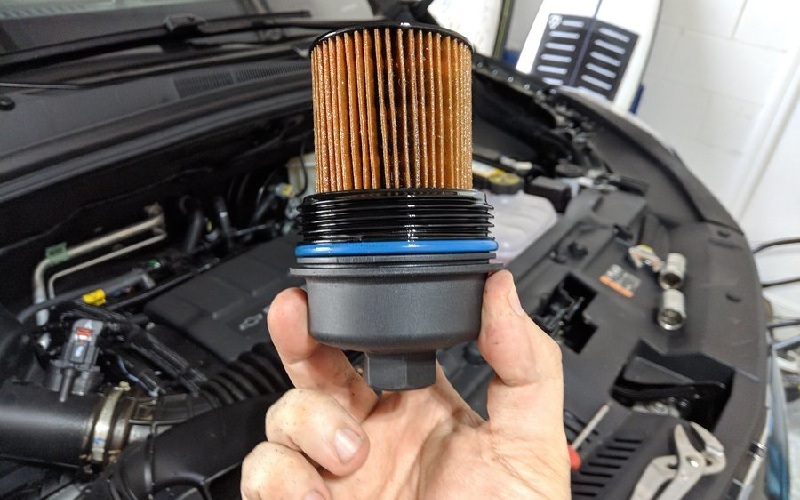Chevy Trax Oil Capacity and Maintenance Requirements
The Chevy Trax continues to deliver reliable performance for Canadian drivers, combining efficiency with versatility in a compact SUV package. Understanding your vehicle’s oil capacity and maintenance requirements ensures optimal performance throughout Ontario’s varied climate conditions. Engine Specifications and Oil Capacity The Chevy Trax available in Canada comes equipped with a 1.4-litre turbocharged engine, delivering […]
The Chevy Trax continues to deliver reliable performance for Canadian drivers, combining efficiency with versatility in a compact SUV package. Understanding your vehicle’s oil capacity and maintenance requirements ensures optimal performance throughout Ontario’s varied climate conditions.

Engine Specifications and Oil Capacity
The Chevy Trax available in Canada comes equipped with a 1.4-litre turbocharged engine, delivering 138 horsepower and 148 lb-ft of torque. This efficient powerplant requires 4.5 litres of oil when performing a complete oil and filter change. The compact design of this engine provides an excellent balance between performance and fuel efficiency, making it ideal for both urban commutes and weekend adventures.
Whether navigating busy city streets or exploring the scenic routes of the Canadian wilderness, your Trax engine requires proper lubrication to maintain peak performance. The precisely calibrated 4.5-litre capacity ensures sufficient oil circulation to protect vital engine components while maintaining optimal operating temperatures.
Recommended Oil Type
For the 1.4-litre turbo (LUV) engine found in Canadian Trax models, Chevrolet recommends SAE 5W-30 viscosity grade engine oil. This specification provides excellent protection across the wide temperature range experienced throughout Canadian seasons.
The advanced 5W-30 formulation delivers exceptional cold-start protection on frigid winter mornings while maintaining robust engine protection during summer heat. For drivers in extreme northern regions where temperatures can plummet to -29°C or lower, an SAE 0W-30 oil may be used for improved cold-weather starting and protection.
Synthetic oil formulations offer enhanced performance benefits, including better flow characteristics at low temperatures, improved high-temperature stability, and extended change intervals. While conventional oils meet minimum requirements, synthetic options provide superior protection for your turbocharged Trax engine.
Oil Change Intervals
Maintaining proper oil change intervals is essential for preserving your Chevy Trax performance and longevity. Under normal driving conditions, the recommended oil change interval is every 8,000 kilometres or 6 months, whichever comes first. However, your Trax has an advanced Oil Life Monitoring System that accurately tracks engine conditions and usage patterns to determine the optimal change interval.
The intelligent system analyzes factors including engine temperature variations, cold starts, short-trip driving, and engine load to calculate exactly when an oil change is necessary. This technology ensures your engine receives fresh oil precisely when needed, optimizing both protection and maintenance costs.
For drivers who frequently encounter severe conditions such as extreme temperatures, dusty environments, or primarily short-trip driving, more frequent oil changes may be beneficial. The Oil Life Monitoring System automatically adjusts recommendations based on these demanding scenarios.
DIY Oil Change Procedure
Performing an oil change on your Chevy Trax is a straightforward procedure that many owners choose to handle themselves. The process begins with safely elevating the vehicle and locating the oil drain plug on the underside of the engine oil pan. After removing the plug and allowing the oil to drain completely, replace the drain plug with a new sealing washer to prevent leaks.
Next, remove the oil filter using an appropriate filter wrench. Before installing the new filter, apply a small amount of fresh oil to the gasket. Hand-tighten the new filter, being careful not to overtighten, which could damage the gasket and cause leaks.
Finally, add approximately 4.5 litres of the recommended 5W-30 oil through the oil fill cap on top of the engine. Start the engine and let it run for a minute, then check for leaks around the filter and drain plug. After turning off the engine and waiting a few minutes, check the oil level with the dipstick and add oil if necessary to reach the full mark.
Signs Your Trax Needs an Oil Change
How do you know when your Chevy Trax requires fresh oil? While the Oil Life Monitoring System provides the most accurate indication, there are several visual and performance cues to watch for.
Darkened, dirty oil on the dipstick indicates contamination and reduced protection. Unusual engine noises, particularly during startup, can signal inadequate lubrication due to degraded oil. Decreased fuel economy or reduced performance might also suggest it’s time for an oil change. The appearance of the maintenance light on your dashboard serves as a direct reminder from your vehicle’s monitoring systems.
Paying attention to these indicators ensures your Trax receives timely maintenance, preserving its performance capabilities and extending engine life.
Impact on Performance and Longevity
Maintaining proper oil levels and change intervals significantly impacts the performance and longevity of your Trax. Clean oil of the correct type and viscosity ensures optimal lubrication, reducing friction and wear on critical engine components.
Regular oil services help prevent sludge buildup that can restrict oil flow to vital parts. The turbocharged engine in the Trax particularly benefits from fresh oil, as the turbocharger operates at extremely high temperatures and relies on oil for both lubrication and cooling.
With consistent maintenance, your Trax will deliver reliable performance throughout its lifespan, maintaining fuel efficiency, power output, and responsiveness across all driving conditions.
Chevy Trax: Versatile Performance
The 4.5-litre oil capacity of the Chevy Trax provides the perfect balance of engine protection and performance for Canadian driving conditions. By following the manufacturer’s recommendations for oil type, capacity, and change intervals, you’ll ensure your Trax continues to deliver the versatile performance and reliability you expect.
Whether you’re navigating urban streets or exploring the scenic routes of Canada, your Trax engine deserves the best care possible. Regular maintenance not only preserves performance but also protects your investment for years to come.
Oil Capacity Facts
- The 4.5-litre oil capacity of the Chevy Trax was specifically engineered to provide optimal performance across Canada’s diverse climate zones. This precise volume maintains consistent oil pressure whether driving through the humid summers of Ontario or the frigid winters of Alberta.
- The Trax oil system incorporates additional capacity specifically dedicated to cooling and lubricating the turbocharger. This feature helps maintain turbocharger efficiency and longevity, particularly during demanding driving conditions that Canadian terrain can present.
- The Trax oil filter is positioned vertically rather than horizontally, allowing for more complete oil drainage during changes. This innovative design helps ensure that nearly all of the old oil is removed during service, improving the effectiveness of each oil change.
- The Trax oil pan features a specialized design that keeps oil closer to the engine block in extremely cold temperatures. This thoughtful engineering detail helps maintain oil viscosity during cold starts, reducing engine wear during Canadian winter conditions.
- The dipstick in the Chevy Trax features a unique stepped design that provides more accurate readings than traditional straight dipsticks. This precision helps owners maintain the exact 4.5-litre capacity needed for optimal performance.
Disclaimer: Content contained in this post is for informational purposes only and may include features and options from US or international models. Please contact the dealership for more information or to confirm vehicle, feature availability.


